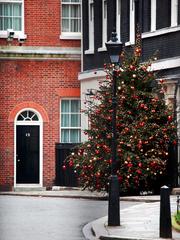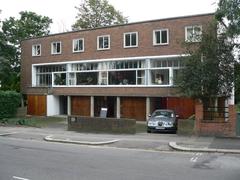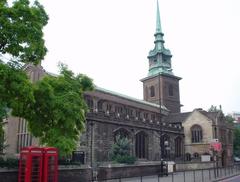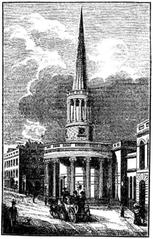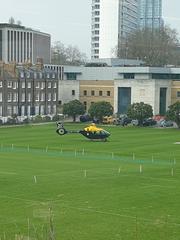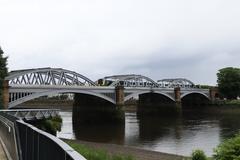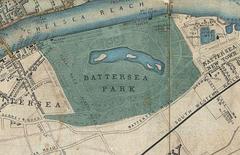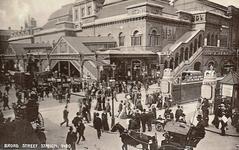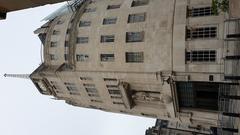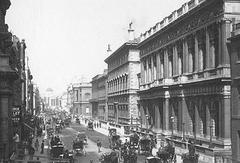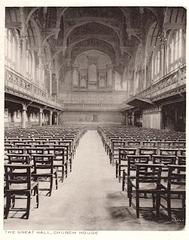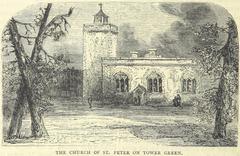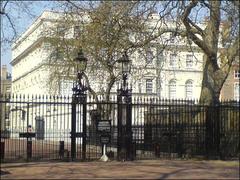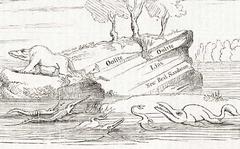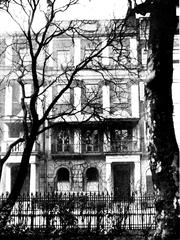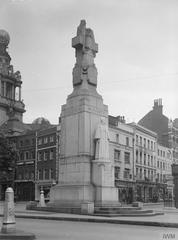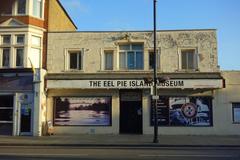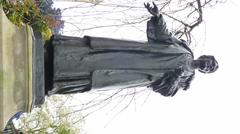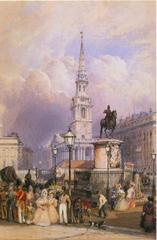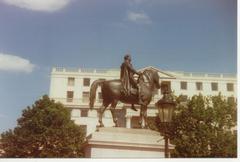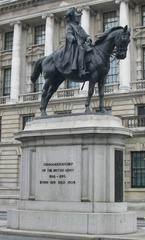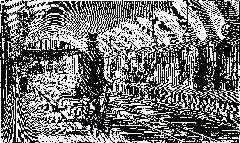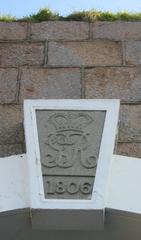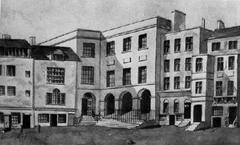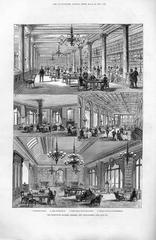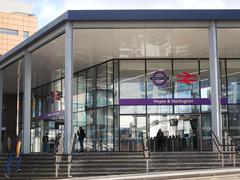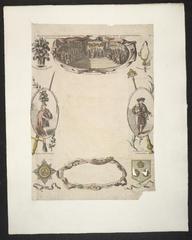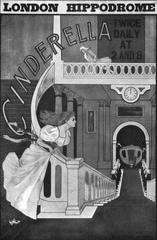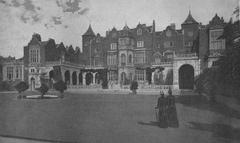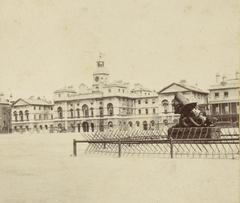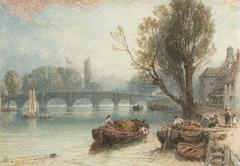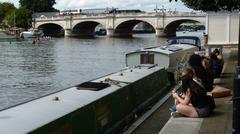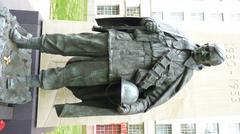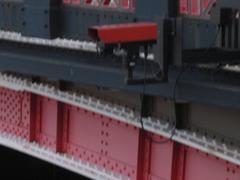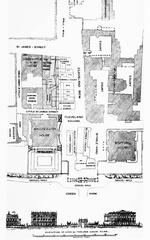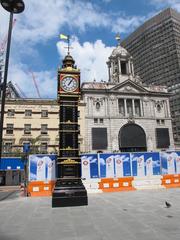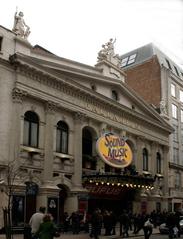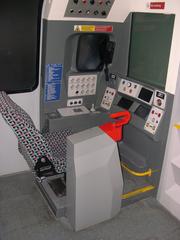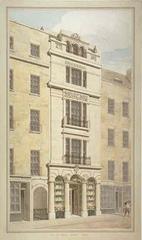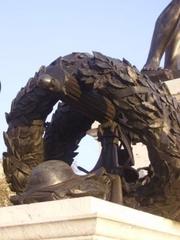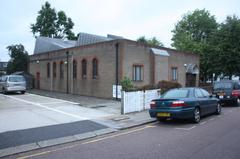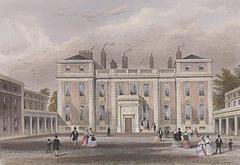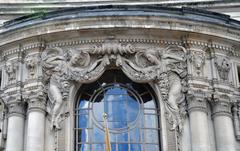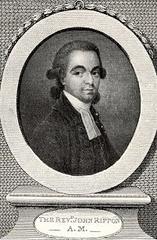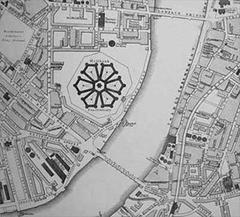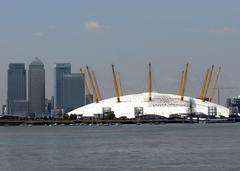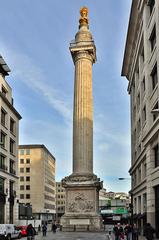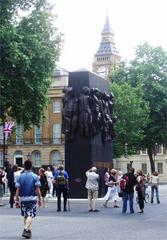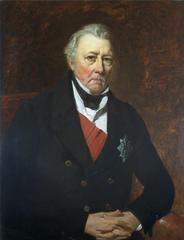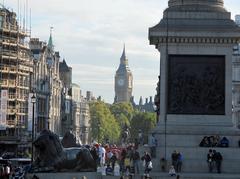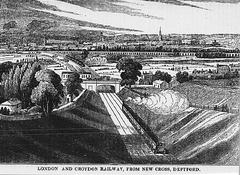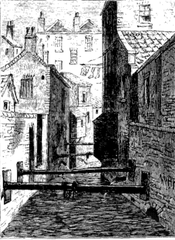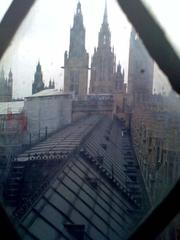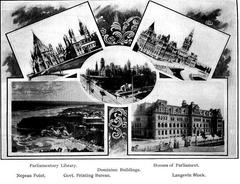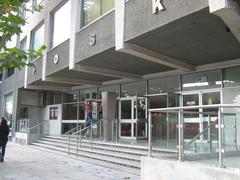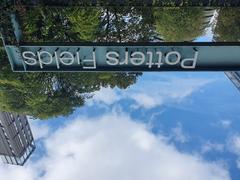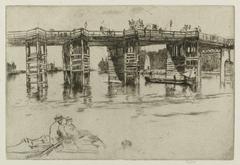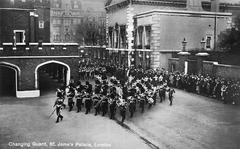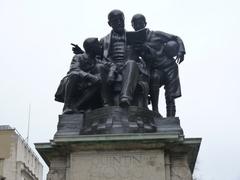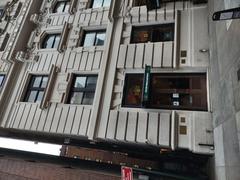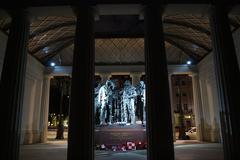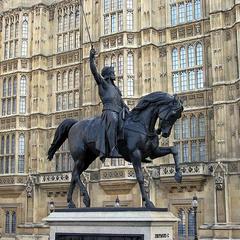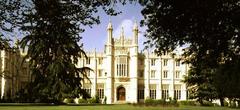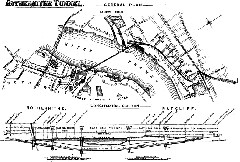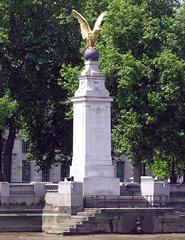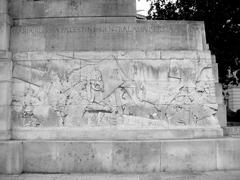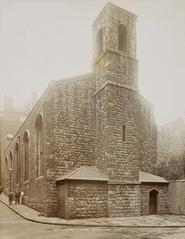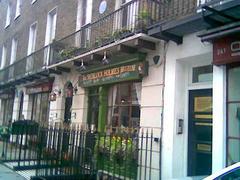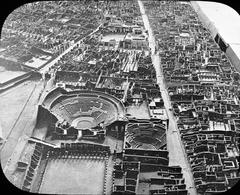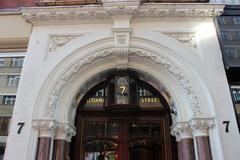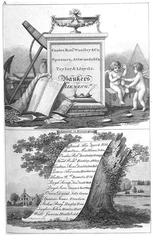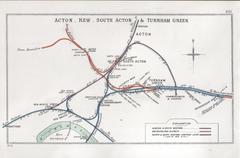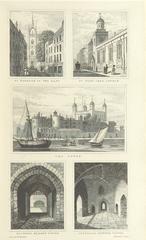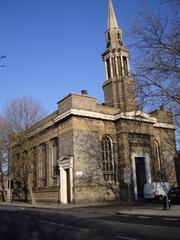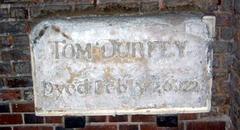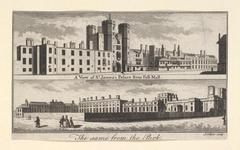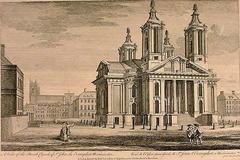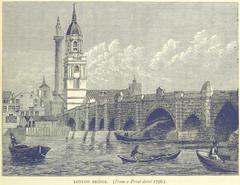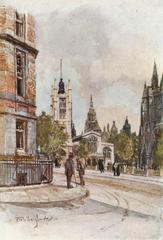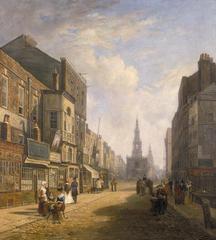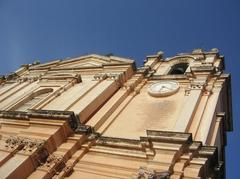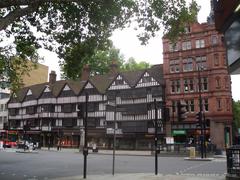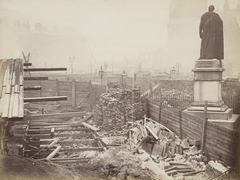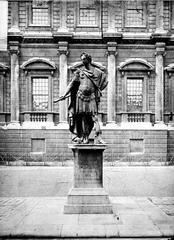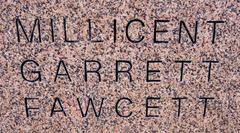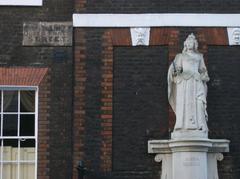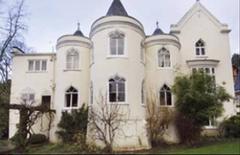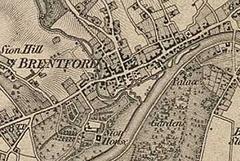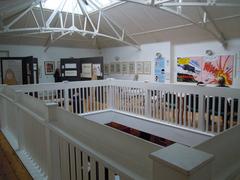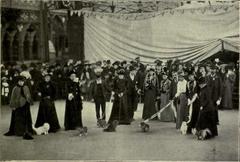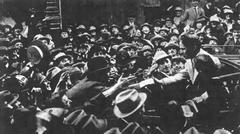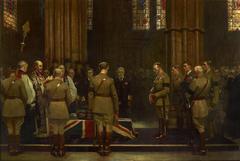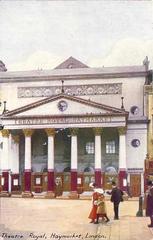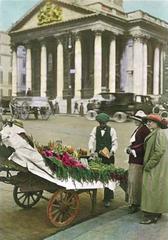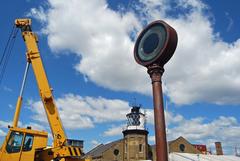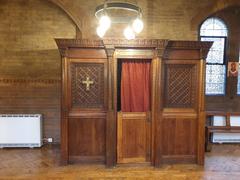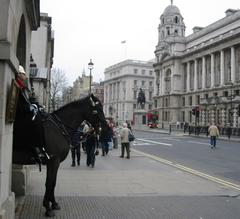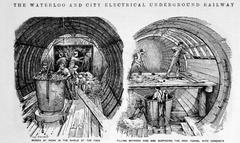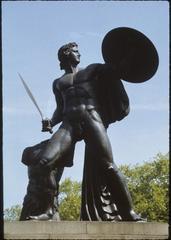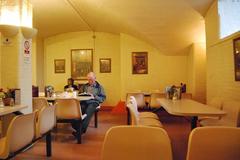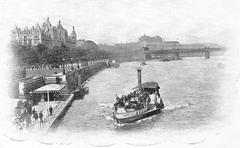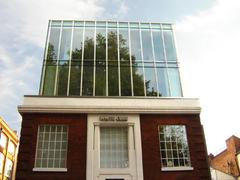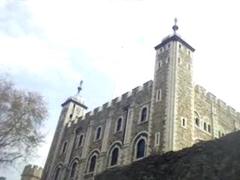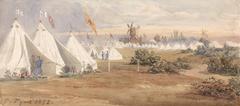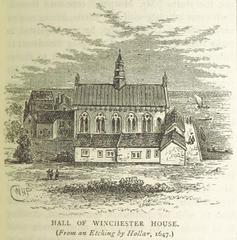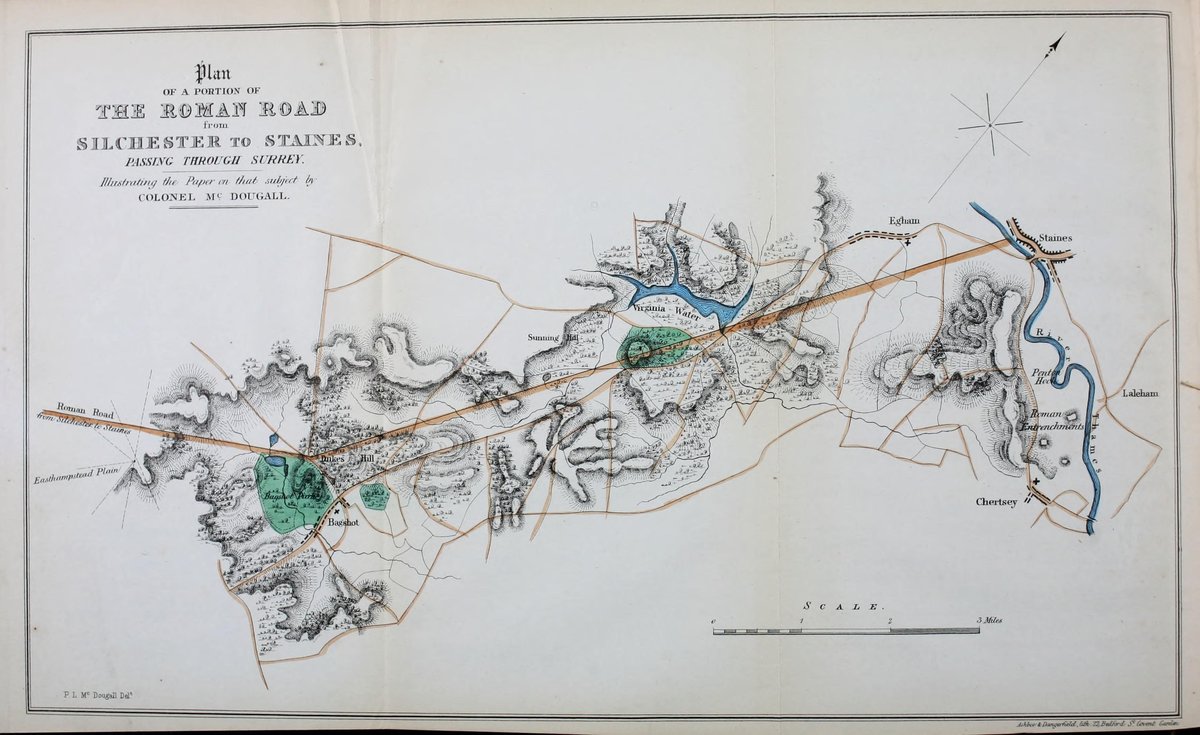
Devil’s Highway London Visitor Guide: History, Tickets, and Tips
Date: 17/08/2024
Introduction
The Devil’s Highway, also known as St Peter’s Way or A666, is a storied road in the United Kingdom that has captivated the imaginations of many due to its ominous name and historical significance. The road derives its notorious moniker from its association with the number 666, often referred to as the ‘Number of the Beast’ in Christian theology, and its high fatality rate, which has further fueled its reputation as a cursed or haunted route (NCESC). Originally part of the Roman road network, the Devil’s Highway served as a crucial conduit for military and trade purposes, connecting Londinium (modern-day London) to Calleva Atrebatum (modern-day Silchester) (Wikipedia). Its Roman origins are still evident today, with sections of the road showcasing the engineering excellence that characterized Roman infrastructure.
In modern times, the road has continued to capture the public’s attention, albeit for different reasons. Its challenging terrain and the high number of accidents along its route have led to various safety measures being implemented, including speed cameras, improved road signage, and public awareness campaigns (NCESC). Despite these efforts, the road remains a point of intrigue and caution for many travelers. This guide aims to provide a comprehensive overview of the Devil’s Highway, covering its history, modern-day challenges, visitor tips, and cultural impact. Whether you are a history enthusiast, a curious traveler, or someone looking to explore one of the UK’s most infamous roads, this guide will offer valuable insights and practical advice for your journey.
Table of Contents
- History of Devil’s Highway
- Modern-Day Challenges and Safety Measures
- Visitor Information and Tips
- Cultural Impact
- FAQ
History of Devil’s Highway
Origins and Naming
The Devil’s Highway, also known as St Peter’s Way or A666, is a road in the United Kingdom that has garnered a notorious reputation over the years. The name “Devil’s Highway” is derived from its association with the number 666, which is often referred to as the “Number of the Beast” in Christian theology. This ominous number, combined with the road’s high fatality rate, has led to its infamous nickname. (NCESC)
Historical Significance and Roman Influence
The Devil’s Highway has a rich history that dates back to ancient times. It was originally part of a Roman road network that connected various parts of the Roman Empire. The road was used for military and trade purposes, facilitating the movement of troops and goods across the region. Over the centuries, the road has seen numerous changes and developments, but its historical significance remains intact.
The road’s Roman origins are evident in its construction and layout. Roman roads were known for their durability and engineering excellence, and the Devil’s Highway is no exception. The road was built using layers of materials, including large stones, gravel, and sand, to create a solid and long-lasting surface. This construction technique allowed the road to withstand the test of time and remain in use for centuries (NCESC).
Modern-Day Challenges and Safety Measures
Notable Incidents
Over the years, the Devil’s Highway has been the site of several notable incidents and accidents. These incidents have contributed to the road’s notorious reputation and have been widely covered in the media. One such incident occurred in the late 19th century when a series of accidents led to numerous fatalities, further cementing the road’s ominous nickname (NCESC).
Efforts to Improve Safety
In response to the high number of accidents, authorities have implemented several measures to improve road safety on the Devil’s Highway. These measures include:
- Speed Cameras: Installation of speed cameras to monitor and enforce speed limits.
- Road Signage: Improved road signage to warn drivers of sharp turns and dangerous sections.
- Barrier Installation: Installation of barriers and guardrails to prevent vehicles from veering off the road.
- Public Awareness Campaigns: Campaigns to raise awareness about the dangers of the road and promote safe driving practices.
Looking ahead, there are plans to further enhance the safety and infrastructure of the Devil’s Highway. These plans include widening certain sections of the road, improving lighting, and implementing advanced traffic management systems. The goal is to reduce the number of accidents and make the road safer for all users.
Visitor Information and Tips
Travel Advice
For those planning to visit the Devil’s Highway, it is essential to take certain precautions to ensure a safe and memorable experience. Here are some tips for visitors:
- Drive Carefully: The road’s challenging terrain and sharp turns require careful driving. Adhere to speed limits and be cautious, especially during adverse weather conditions.
- Plan Your Route: Familiarize yourself with the route and plan your journey in advance. Use GPS navigation to stay on track and avoid getting lost.
- Check Vehicle Condition: Ensure that your vehicle is in good condition before embarking on the journey. Check the brakes, tires, and engine to avoid any breakdowns on the road.
- Stay Alert: Be aware of other drivers and road conditions. Stay focused and avoid distractions while driving.
- Emergency Kit: Carry an emergency kit that includes a first aid kit, flashlight, water, and basic tools. This can be helpful in case of any emergencies or breakdowns.
Detailed Visitor Information
- Visiting Hours: The road is open 24/7, but it is advisable to travel during daylight hours for better visibility and safety.
- Ticket Prices: There are no tickets required to drive on the Devil’s Highway, but be aware of potential tolls on connecting roads.
- Nearby Attractions: While exploring the Devil’s Highway, visitors can also check out nearby historical sites such as the Roman ruins and local museums.
- Accessibility: The road is accessible to all types of vehicles, but larger vehicles should exercise extra caution due to the narrow and winding sections.
Cultural Impact
The Devil’s Highway has also made its mark on popular culture. Its eerie reputation has inspired numerous stories, legends, and even books. One notable work is “The Devil’s Highway” by Luis Alberto Urrea, which tells the harrowing true story of a group of Mexican migrants who attempted to cross the US-Mexico border and found themselves trapped in the deadly Sonoran Desert. While this book is not directly related to the UK road, it shares the same name and highlights the dangers associated with treacherous routes (NCESC).
Conclusion
The Devil’s Highway in the UK is a road steeped in history and shrouded in mystery. Its Roman origins, combined with its modern-day challenges, make it a fascinating yet dangerous route. Visitors are advised to take necessary precautions and drive carefully to ensure a safe journey. With ongoing efforts to improve road safety, the future looks promising for this notorious highway.
FAQ
- Is Devil’s Highway safe? The road has a high number of accidents, but ongoing safety measures aim to reduce risks.
- How do I get to Devil’s Highway? The road is accessible via major highways and is well-marked on GPS systems.
- Are there guided tours? There are no official guided tours, but local guides may offer historical tours of the area.
- What are the best times to visit? Daylight hours are recommended for better visibility and safety.
- Can I take photographs? Yes, there are several scenic spots along the road ideal for photography.
Call to Action
For more information on visiting historical sites in the UK, download our mobile app Audiala, check out other related posts, or follow us on social media for updates and travel tips.
Exploring the Devil’s Highway
Historical Context
The Devil’s Highway, a Roman road in Britain, was a crucial route connecting Londinium (modern-day London) to Calleva Atrebatum (Silchester). Constructed around AD 47-48, this road was pivotal during the Roman period, serving as the principal route to the west of Britain. The road’s significance is underscored by its strategic role in facilitating military movements, trade, and communication across the Roman province of Britannia. The road’s construction involved meticulous engineering, with sections paved with gravel and widths ranging from 25 to 30 feet (wikishire).
Route and Structure
The Devil’s Highway began at the bridgehead on the Thames in Londinium, running straight to Newgate on the London Wall before passing over Ludgate Hill and the Fleet. It then separated into the Devil’s Highway and the northwest stretch of Watling Street, heading towards Verulamium (St Albans). The road’s route was carefully planned to ensure efficient travel and transport, with bridges at Pontes (Staines) likely crossing Church Island (Wikipedia).
At Calleva Atrebatum, the road split into three major routes: the Port Way to Sorviodunum (Old Sarum), the Ermin Way to Glevum (Gloucester), and the road to Aquae Sulis (Bath). This network of roads highlights the Devil’s Highway’s role as a major crossroads in Roman Britain, facilitating movement and trade across the region (everything.explained.today).
Rediscovery and Preservation
The London portion of the Devil’s Highway was rediscovered during the rebuilding of St Mary-le-Bow church by Christopher Wren in 1671-73, following the Great Fire of London. Modern excavations have dated its construction to the winter of AD 47-48. The road was repeatedly redone, including at least twice before the sack of London by Boudica’s army in AD 60 or 61 (wikishire).
In Berkshire, the road passes through Windsor Forest and is particularly well-defined in large forestry plantations such as Swinley Forest. Here, it is used both as a footpath and forestry track, showcasing its preservation and continued relevance in modern times (Wikipedia).
Cultural and Archaeological Significance
The Devil’s Highway is not just a historical artifact but also a cultural landmark. Its name, derived from later ignorance of its origin and history, reflects the road’s mysterious and ancient allure. The road’s archaeological significance is evident in the well-excavated and exposed sections at Calleva Atrebatum, where visitors can explore the remains of the Roman town, including a large mansio near the South Gate and a restored Roman amphitheatre (everything.explained.today).
Visitor Tips
Exploring the Route
Visitors interested in exploring the Devil’s Highway can start their journey in London, where the road’s origins can be traced. Key sites include the area around St Mary-le-Bow church and the route towards Newgate on the London Wall. For those venturing further, the well-preserved sections in Windsor Forest and Swinley Forest offer a glimpse into the road’s historical path.
Nearby Attractions
While exploring the Devil’s Highway, visitors can also enjoy nearby attractions. In London, landmarks such as Big Ben, the Tower of London, and the British Museum provide a rich historical context. In Berkshire, the scenic beauty of Windsor Forest and the historical significance of Calleva Atrebatum enhance the visitor experience (fullsuitcase).
Practical Information
To make the most of their visit, tourists should consider the following tips:
- Timing: Avoid peak tourist seasons such as July and August, as well as European bank holidays and school breaks, to enjoy a more relaxed experience.
- Guided Tours: Booking guided tours can provide valuable insights into the historical and cultural significance of the Devil’s Highway. Some tours offer skip-the-line access to popular sites, enhancing the overall experience (nomadicmatt).
- Accommodation: Staying in central London provides easy access to the starting point of the Devil’s Highway and other major attractions. For those exploring further sections, accommodations in Berkshire offer proximity to Windsor Forest and Swinley Forest (fullsuitcase).
FAQ
What are the visiting hours for the Devil’s Highway?
The Devil’s Highway itself does not have specific visiting hours as it is an open historical route. However, some related sites, such as Calleva Atrebatum, may have specific hours of operation. It is advisable to check local guides and official websites for up-to-date information.
Are there guided tours available for the Devil’s Highway?
Yes, there are guided tours available that provide in-depth historical and cultural insights into the Devil’s Highway. Booking these tours in advance is recommended to ensure availability.
What are the best times to visit the Devil’s Highway?
The best times to visit the Devil’s Highway are during the spring and autumn months when the weather is mild and the tourist crowds are smaller. Avoiding peak tourist seasons and public holidays will enhance the experience.
Conclusion
The Devil’s Highway stands as a testament to Roman engineering and its enduring impact on Britain’s landscape. Its historical, cultural, and archaeological significance make it a must-visit for history enthusiasts and curious travelers alike. By following the practical tips and exploring the route and nearby attractions, visitors can gain a deeper appreciation of this ancient road and its role in shaping the history of Britain.
For more travel tips and historical insights, download our mobile app Audiala, and follow us on social media for the latest updates.
Exploring Devil’s Highway: Tips for Visiting this Historical Roman Road in London
Understanding Devil’s Highway
Devil’s Highway is a historic Roman road that once connected Londinium (modern-day London) to Calleva Atrebatum (modern-day Silchester). This ancient route is steeped in history and offers a unique glimpse into Roman Britain. While much of the original road has been overlaid by modern infrastructure, several sections remain accessible and are popular with history enthusiasts and hikers alike.
Best Time to Visit
The best time to visit Devil’s Highway is during the late spring to early autumn months (May to September). During this period, the weather is generally mild and conducive to outdoor activities. London experiences its warmest weather in July and August, with temperatures ranging from 50°F to 73°F (Travellers Worldwide). However, it’s essential to be prepared for sudden changes in weather, as London is known for its unpredictability.
Visiting Hours and Tickets
Devil’s Highway is an open historical route, so there are no specific visiting hours or ticket requirements. However, it is advisable to explore the route during daylight hours for safety reasons.
What to Wear and Pack
Given the variable weather, it’s advisable to dress in layers and carry essentials such as:
- Comfortable Walking Shoes: The terrain can be uneven, so sturdy footwear is a must.
- Waterproof Jacket: Rain is always a possibility, even in summer.
- Hat and Sunglasses: For protection against the sun during warmer months.
- Water Bottle: Staying hydrated is crucial, especially if you plan to walk long distances.
- Map or GPS Device: While parts of the route are well-marked, having a reliable navigation tool is beneficial.
Navigating the Route
Devil’s Highway can be explored in sections, with some parts more accessible than others. Key points of interest along the route include:
- Staines-upon-Thames: This town offers a good starting point, with several markers indicating the ancient road’s path.
- Virginia Water: A scenic area where remnants of the road can be seen.
- Silchester: The endpoint of the route, home to well-preserved Roman ruins.
For those interested in a guided experience, several local tour operators offer walking tours that provide historical context and insights into the significance of the road.
Safety Considerations
While exploring Devil’s Highway, keep the following safety tips in mind:
- Stay on Marked Paths: Straying off the designated route can lead to encounters with uneven terrain or private property.
- Check Weather Forecasts: Sudden weather changes can make parts of the route slippery and challenging to navigate.
- Inform Someone of Your Plans: If hiking alone, let someone know your itinerary and expected return time.
- Carry a First Aid Kit: Basic supplies can be invaluable in case of minor injuries.
Cultural Etiquette
When visiting historical sites, it’s essential to respect the local culture and environment:
- Do Not Litter: Carry all trash with you until you find a proper disposal bin.
- Respect Private Property: Some sections of the route may pass near private land; always stay on public paths.
- Be Mindful of Wildlife: The areas surrounding Devil’s Highway are home to various wildlife species. Observe from a distance and avoid disturbing their natural habitat.
Accessibility
Devil’s Highway is partially accessible to individuals with mobility issues. Some sections, particularly those near urban areas, are paved and easier to navigate. However, more remote parts may present challenges due to uneven ground and lack of facilities. It’s advisable to research specific sections in advance and plan accordingly.
Nearby Amenities
While exploring Devil’s Highway, you may need to access amenities such as restrooms, food, and accommodation. Key locations offering these services include:
- Staines-upon-Thames: Numerous cafes, restaurants, and hotels cater to visitors.
- Virginia Water: Offers picnic areas and a few dining options.
- Silchester: Limited amenities, but nearby towns provide additional options.
Transportation
Getting to and from Devil’s Highway is relatively straightforward:
- Public Transport: Trains and buses connect London to key points along the route, such as Staines-upon-Thames and Virginia Water. The Transport for London website provides detailed schedules and route maps.
- Car Rentals: For greater flexibility, consider renting a car. However, be mindful of parking restrictions and availability, especially in more rural areas. — Cycling: Some sections of the route are suitable for cycling, offering an alternative way to explore the area.
Photography Tips
Devil’s Highway offers numerous photo opportunities, from scenic landscapes to historical landmarks. To capture the best shots:
- Golden Hour: Early morning or late afternoon light provides the best conditions for photography.
- Wide-Angle Lens: Ideal for capturing the expansive views and historical sites.
- Tripod: Useful for steady shots, especially in low light conditions.
Local Insights
Engaging with local communities can enhance your visit. Many residents are knowledgeable about the history of Devil’s Highway and can offer valuable insights. Consider visiting local museums or historical societies for a deeper understanding of the area’s significance.
Unique Aspects and Special Events
Throughout the year, there may be special events and guided tours that highlight the historical and cultural significance of Devil’s Highway. Check local listings and tourism websites for upcoming events that might coincide with your visit.
Additional Resources
For more detailed information and planning tools, consider the following resources:
FAQ
Q: Are there specific visiting hours for Devil’s Highway?
A: Devil’s Highway is an open historical route, so there are no specific visiting hours. However, it is advisable to explore the route during daylight hours for safety reasons.
Q: Do I need a ticket to walk Devil’s Highway?
A: No, there are no ticket requirements to walk Devil’s Highway.
Q: What should I wear when visiting Devil’s Highway?
A: Dress in layers and wear comfortable walking shoes. A waterproof jacket, hat, and sunglasses are also recommended.
Q: Are guided tours available?
A: Yes, several local tour operators offer guided walking tours that provide historical context and insights.
Q: Is Devil’s Highway accessible to individuals with mobility issues?
A: Some sections are accessible, particularly those near urban areas. However, more remote parts may be challenging due to uneven ground.
Call to Action
Ready to explore Devil’s Highway? Download our mobile app Audiala for more travel tips, check out other related posts, and follow us on social media for the latest updates and travel inspiration.
Conclusion
The Devil’s Highway stands as a testament to the enduring legacy of Roman engineering and its impact on the British landscape. From its origins as a vital Roman route facilitating military and trade movements to its modern-day reputation as a hazardous and mysterious road, the Devil’s Highway offers a unique blend of historical significance and contemporary challenges. Efforts to improve safety have been ongoing, with authorities implementing various measures to reduce accidents and enhance road conditions. However, the road’s notoriety continues to draw visitors intrigued by its history and the myths that surround it (NCESC).
For those planning to explore the Devil’s Highway, taking necessary precautions and adhering to safety guidelines is crucial. The road offers not just a journey through a scenic landscape but also a trip back in time, allowing visitors to walk in the footsteps of Roman soldiers and traders. Nearby attractions, such as Roman ruins and local museums, enrich the experience, making it a worthwhile visit for history buffs and casual travelers alike (everything.explained.today). With ongoing efforts to preserve and enhance this historical route, the future looks promising for the Devil’s Highway, ensuring that its story continues to captivate and educate future generations.
References
- NCESC. (n.d.). Why is it Called the Devil’s Highway UK? NCESC
- Wikipedia. (n.d.). Devil’s Highway (Roman Britain). Wikipedia
- Everything Explained Today. (n.d.). Devil’s Highway (Roman Britain). Everything Explained Today


